Cordless Drill Tips
Gareth's Tips, Tools, and Shop Tales - Issue #78
I’m still looking to deputize you, dear readers, for tips testing. Pick a tip (from this newsletter or anywhere), give it a good test, and send me the results (extra credit for a video tips-test). This spring, I’ll do a drawing from those who’ve submitted tips tests, and 3 people will receive signed copies of both Volume 1 and the forthcoming Volume 2 of my Tips and Tales from the Workshop. Let me know if you have any questions, but that’s about it: Pick a tip, subject it to honest, real-world testing, report back.
Cordless Drill Tips
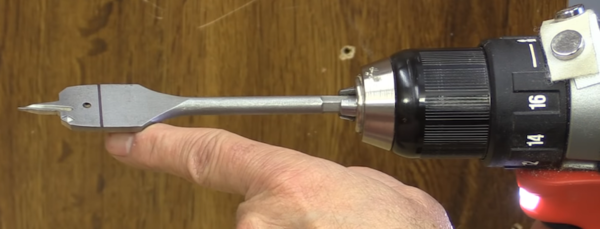
Marking depth right on the bit.
On the YouTube channel, WoodWorkWeb, Colin Knecht shares five really useful tricks for cordless drills. These include well-known ideas like using magnets on your drill to carry screws on-board and cutting a slot into a stripped screw with a Dremel for removing with a slotted bit to marking the desired cut-depth right on a spade bit, reversing your drill for better counter-sinking, and creating a tap for your drill using a bolt.
Ten Mods for the Black & Decker WorkMate
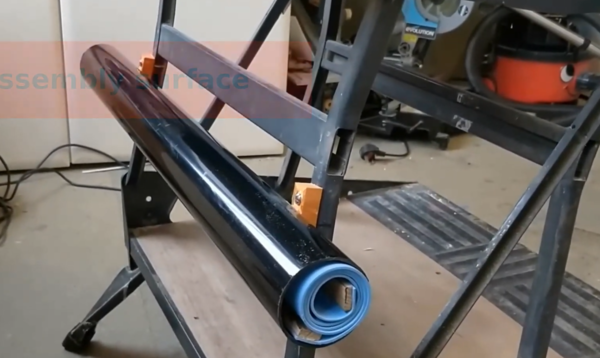
A foam benchtop pad that stows away in PVC pipe.
On the DIY Tinkerer, he shows off ten modifications he’s done to his Black & Decker WorkMate. The WorkMate is a portable bench used by many makers, especially those with small workspaces, so it’s great to see how you can modify it for maximum versatility. In these two videos (1, 2), he shows things like bringing power onto the bench, an add-on woodworker’s vise, a paper roll dispenser for covering the surface for painting/finishing, and a stowable soft top for clean work, like electronics.
Adam Savage Nerds Out Over a Can of Vintage Tapping Fluid
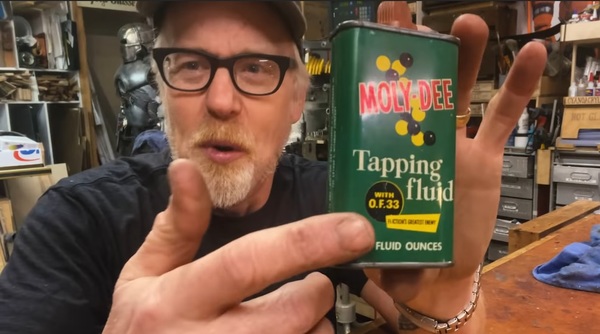
Lubricant: “Friction’s greatest enemy.”
In this video, Adam Savage spends 8 minutes extolling the virtues of Moly Dee, a tapping fluid from the 1960s. Actually, Adam simply makes the point to use more cooling fluids like this product when doing things like tapping and cutting. The main purpose of the video is to geek out over the awesome retro can design for Moly Dee and its overly exuberant product copy, with lines like: “Friction’s greatest enemy” and “rich in oiliness” with “an ever-present cushion of lubricity.” Moly Dee is the “finest machining assistant yet devised by nature and the skill of man.” BTW: It turns out, you can still get Moly Dee (now in completely soulless packaging!).
In Praise of Single-Use Super Glue
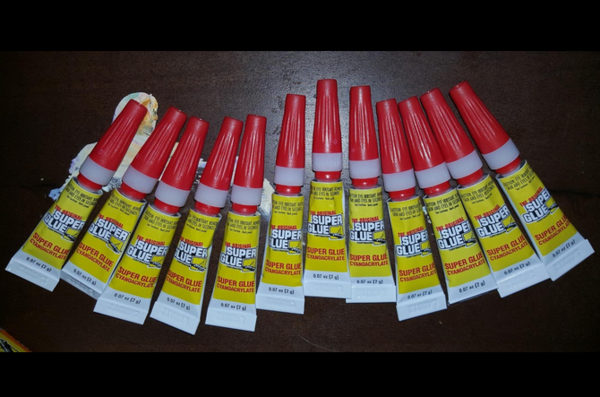
No more blood-letting for a dab of glue.
Confession time. I’ve had the worst luck with CA glue bottles. I’ve wasted so many bottles of expensive 1-2 ounce bottles of Bob Smith Industries and similar “professional glues.” The long, tapered nozzles get clogged no matter what I do and I spend WAY too much time trying not to stab myself as I jam needles and other pointy bits into them to get glue to flow. Half the time, I end up just taking the nozzle off and applying the glue with a toothpick. My glue life has improved a lot since I started using tiny one-use tubes of Super Glue. You can get a dozen 2-gram tubes for under $7 on Amazon. And, BTW, CA glue has a short shelf-life of only about a month once opened. So, unless you plan to use 2 ounces within a month, those fancy glues are wasting you money.
The CutList Optimizer
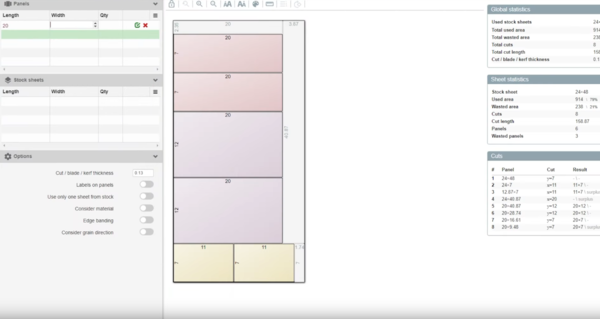
Save on materials costs with this handy app.
Via Maker Update comes this useful online calculator. The CutList Optimizer is a tool for calculating the optimum layout for cutting sheet goods. You enter your cut list and the dimensions of your material and it will calculate the most efficient layout for cutting. Handy!
The Rodney Brooks Research Heuristic

Artwork by Mark Frauenfelder for Absolute Beginner’s Guide to Building Robots.
From my 2003 book, Absolute Beginner’s Guide to Building Robots:
Innovation comes from looking at things differently, heading down the road less traveled. Or re-traveling the old roads to notice what others have missed. I call this the Rodney Brooks Research Heuristic. Here’s how this works: In his book Flesh and Machines, maverick scientist Brooks reveals how he came upon many of his radical ideas regarding robots and artificial intelligence. He would figure out what was so obvious to other researchers that it wasn’t even on their radar any longer, and he’d put it on his. Essentially, Brooks would look at how everyone else was tackling a given problem and what assumptions were so implicit to them that these assumptions had been backgrounded and were no longer being questioned. He would question them. As an example: In designing the Roomba, everyone was stuck on the idea that it had to have a vacuum in it (it was, after all, a robot vacuum!). Vacuum was a backgrounded assumption. Brooks realized that a robotic broom was far easier, cheaper, and quieter.
Blue Tape Lift

Blue tape as a laser-cut parts lift
Oh, the things you can do with painter’s tape. In his Instagram story, Jimmy DiResta used painter’s tape to lift a piece of laser-cut acrylic to test that it was the proper size. After removing and testing the fit, he put it back in place on his laser cutter and finished etching the text on it.
02/4/21(Gareth’s Tips, Tools, and Shop Tales is published by Cool Tools Lab. To receive the newsletter a week early, sign up here. — editors)









